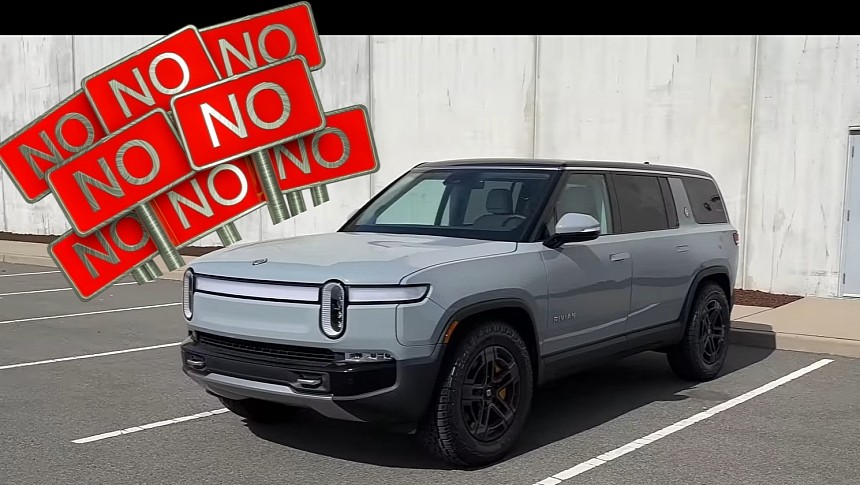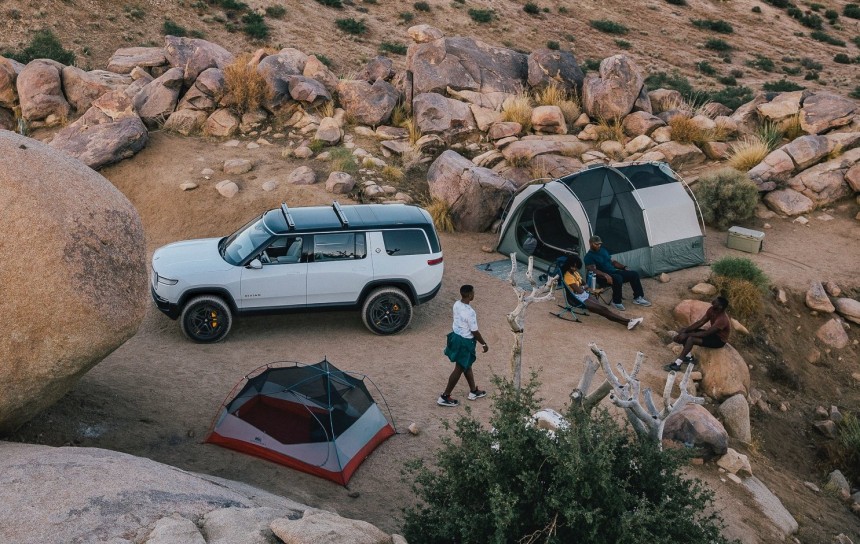Early adopters had a good run. Fast charging was free or very cheap for a couple of years. But now, things are changing. With very few exceptions, gas has gotten cheaper. It might even enter a downtrend soon. Electricity dispensed by DC chargers has not. EV owners like this Rivian R1S customer must deal with the new reality and adapt. However, they still have a way to keep EV ownership costs low. Here's what happened.
There's no denying that, in the grand scheme of things, all-electric vehicles are better. They are more silent, quicker, and a whole lot cleaner. They benefit local environments because no fossil fuel is being burned for mobility. Thus, no emissions are released into the air we all breathe.
But are you willing to pay more money out of your own pocket to fight climate change? Not only do EVs have a higher acquisition cost, but they are also costlier to insure. Besides that, traveling long distances will require stopping at DC fast chargers. If you don't live in a state where providers like Electrify America or EVgo charge by the minute, the cost of a kWh can easily reach unwanted levels.
A Texas-based Rivian R1S owner took a 600-mile trip and spent $153.28 for 281.73 kWh of electricity. He claims that the average price per kWh was $0.54. The latest data from the Energy Information Administration (EIA) shows that the national average kWh price for a residential customer is $0.16. Commercial buyers spend $0.13 per kWh.
His three-row vehicle is a quad-motor, 835-hp R1S riding on 22-inch wheels. The energy consumption for the whole trip was 45.8 kWh per 100 miles.
The man, who identified himself as John O., also owned a Honda Pilot, a gas-powered three-row mid-size SUV. According to him, the vehicle uses a V6 engine and has a fuel efficiency of around 21 mpg. He said that the same trip would have cost almost half. He estimated approximately $85. In Texas, the average price of gas is currently around $2.7 per gallon. So, the math checks out.
Things can look a whole lot differently if you live or visit a state like California. There, the average price of gas is $4.7 per gallon.
Besides the price of electricity, it's also worth noting that the R1S owner wasn't willing to spend a lot of time plugged in. He said he always charged the EV to around 70%. However, the DC stalls he selected via A Better Route Planner weren't always online or working properly. That forced him to add extra miles to the trip because he had to find different stations with up and running high-power pedestals.
Some charging spots were also popular with other EV owners. That meant he had to spend more time hooked to a stall because when others started replenishing their high-voltage batteries, the charging speed more than halved. The fact that Rivian started charging for electrons also didn't help.
So, not only is charging an EV more expensive when doing long trips, but it's also a lottery. You could find a working stall dispensing energy at its maximum capacity, but you could also have to deal with other drivers looking to do the same. The output could be throttled if the DC fast chargers share a connection.
That prompted this Rivian owner to say he won't take the R1S on long trips again. He also underlined on RivianOwnersForum that other EV buyers he met on the road shared his opinion about the challenges of battery-powered motoring. It can get complicated pretty fast.
However, if you still want to take your EV for a road trip, there's a smart thing you can do in advance: find accommodation where you can plug in overnight for free or pay for cheaper L2 charging. It takes longer, but you can rest comfortably in a bed before having to unplug.
At the end of the day, one thing remains true: if you drive a lot and value time and simplicity, stick with gas cars. It also helps if you don't live on the West Coast.
EVs are the future and will become increasingly more common, but many challenges still lie ahead for most Americans looking to switch to zero-emission mobility.
On the other hand, if you're an urban dweller and have a garage or access to a socket, something like the Tesla Model 3 is a no-brainer. Charging at home is going to be cheaper than filling up with gas for the foreseeable future. When you can't go back home to replenish the high-voltage energy storage unit, the reliable Supercharger network can be of help.
Just make sure you're not going to have to spend more on tires, insurance, and registration.
But are you willing to pay more money out of your own pocket to fight climate change? Not only do EVs have a higher acquisition cost, but they are also costlier to insure. Besides that, traveling long distances will require stopping at DC fast chargers. If you don't live in a state where providers like Electrify America or EVgo charge by the minute, the cost of a kWh can easily reach unwanted levels.
A Texas-based Rivian R1S owner took a 600-mile trip and spent $153.28 for 281.73 kWh of electricity. He claims that the average price per kWh was $0.54. The latest data from the Energy Information Administration (EIA) shows that the national average kWh price for a residential customer is $0.16. Commercial buyers spend $0.13 per kWh.
His three-row vehicle is a quad-motor, 835-hp R1S riding on 22-inch wheels. The energy consumption for the whole trip was 45.8 kWh per 100 miles.
The man, who identified himself as John O., also owned a Honda Pilot, a gas-powered three-row mid-size SUV. According to him, the vehicle uses a V6 engine and has a fuel efficiency of around 21 mpg. He said that the same trip would have cost almost half. He estimated approximately $85. In Texas, the average price of gas is currently around $2.7 per gallon. So, the math checks out.
Things can look a whole lot differently if you live or visit a state like California. There, the average price of gas is $4.7 per gallon.
Besides the price of electricity, it's also worth noting that the R1S owner wasn't willing to spend a lot of time plugged in. He said he always charged the EV to around 70%. However, the DC stalls he selected via A Better Route Planner weren't always online or working properly. That forced him to add extra miles to the trip because he had to find different stations with up and running high-power pedestals.
Some charging spots were also popular with other EV owners. That meant he had to spend more time hooked to a stall because when others started replenishing their high-voltage batteries, the charging speed more than halved. The fact that Rivian started charging for electrons also didn't help.
That prompted this Rivian owner to say he won't take the R1S on long trips again. He also underlined on RivianOwnersForum that other EV buyers he met on the road shared his opinion about the challenges of battery-powered motoring. It can get complicated pretty fast.
However, if you still want to take your EV for a road trip, there's a smart thing you can do in advance: find accommodation where you can plug in overnight for free or pay for cheaper L2 charging. It takes longer, but you can rest comfortably in a bed before having to unplug.
At the end of the day, one thing remains true: if you drive a lot and value time and simplicity, stick with gas cars. It also helps if you don't live on the West Coast.
EVs are the future and will become increasingly more common, but many challenges still lie ahead for most Americans looking to switch to zero-emission mobility.
On the other hand, if you're an urban dweller and have a garage or access to a socket, something like the Tesla Model 3 is a no-brainer. Charging at home is going to be cheaper than filling up with gas for the foreseeable future. When you can't go back home to replenish the high-voltage energy storage unit, the reliable Supercharger network can be of help.
Just make sure you're not going to have to spend more on tires, insurance, and registration.











